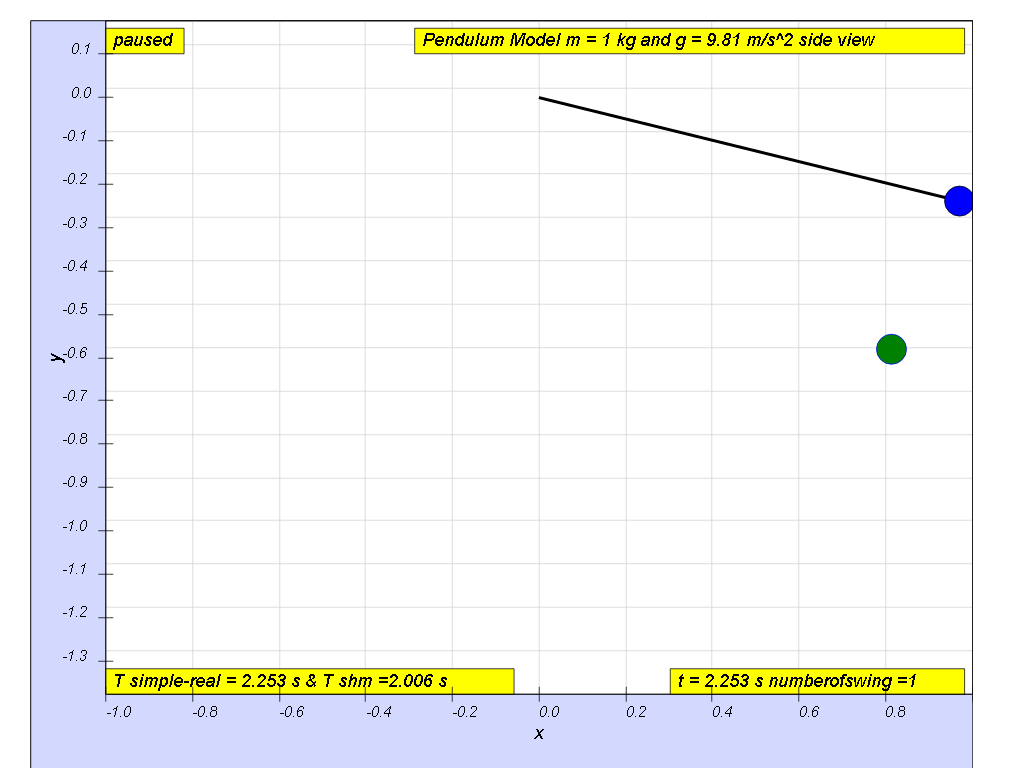
Example 1: Simple pendulum A pendulum bob given an initial horizontal displacement and released to swing freely to produce to and fro motion
| angle / degree | T /s | Ttheory / s | |
| 05 | |||
| 10 | |||
| 15 | |||
| 20 | |||
| 30 | |||
| 40 | |||
| 50 | |||
| 60 | |||
| 70 | |||
| 80 | |||
| 90 |
With the evidences
collected or otherwise, suggests what the conditions of which the
angle of oscillation can the actual period T be approximated to
theoretical period such that T ≈
angle θ ≈ 10 degrees for ,
depending on what is the error acceptable, small angle is
typically about less than 10 degree of swing from the vertical.
Motion approximates simple harmonic motion when the angle of
oscillation is small < 10 degrees..
Motion approximates SHM when the spring does not exceed limit of
proportionality during oscillations.
Astronomical applications of the Small Angle Approximation
http://youtu.be/BRbCW2MsL94?t=2m16s This video shows many pendulums that goes in phase and out of phase with each other pendulum to creating a visually stunning effect.